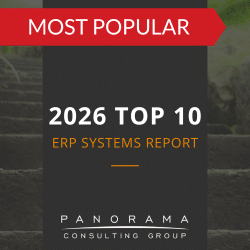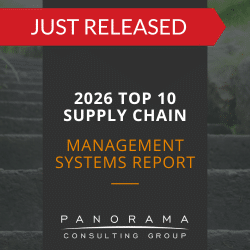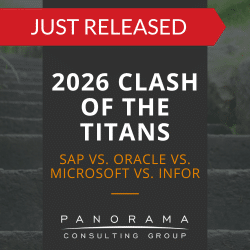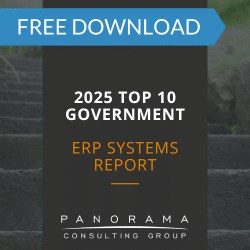- Hidden ERP contract clauses quietly shift risk to buyers, eroding ROI through vague scope, renewal traps, and post-go-live limitations.
- ERP deal pitfalls often emerge mid-project, when vague language and third-party costs drive budget overruns and operational delays.
- Long-term ERP value depends on contracts that align with business priorities, not vendor timelines or incentive structures.
- Many executives are rethinking ERP procurement to surface silent risks early and protect against downstream cost escalation.
ERP software promises streamlined processes, unified data, and operational visibility. However, you have to watch out for the fine print.
ERP contract clauses, buried in service agreements and licensing documents, shape the long-term value of your ERP investment. These clauses are rarely discussed in demos. Yet they often determine who controls your data, how you receive support, and what flexibility you have after going live.
Left unchecked, these clauses quietly drive ERP cost overruns and magnify ERP project budget risks.
This post is for executive leaders who want clarity, not surprises. If you’re preparing for, or renegotiating an ERP deal, here’s how to spot the pitfalls and strengthen your position.
Contemplating litigation?
We have multiple software expert witnesses available for provision of reports, depositions, and testimonies.
6 Contract Clauses That Undermine ERP ROI
Most ERP contract clauses are structured in the vendor’s favor. And unless you surface them early, your leverage disappears after the deal closes.
Below are six contract pitfalls that erode value over time.
1. Ambiguous Scope Definitions
ERP vendors often use vague language to define what’s “in scope” for implementation. Terms like “standard configuration” or “core functionality” may sound comprehensive, but they create wiggle room.
Once your project is underway, those ambiguous definitions open the door for change orders and scope disputes. Every added report, integration, or user training module becomes a separate negotiation.
Strategic move: Demand a granular breakdown of implementation deliverables by workstream. Make sure to account for all expected use cases and industry-specific workflows. Tie payments to completed milestones, not just dates.
2. Uncapped Time and Materials (T&M) Services
Many ERP vendors present T&M models as flexible. But without guardrails, this flexibility turns into ballooning costs. A few missed requirements or process gaps can lead to weeks of unplanned consulting hours.
Uncapped T&M is one of the most common causes of ERP cost overruns, especially in multi-entity or highly customized environments.
Strategic move: Cap T&M engagements and require pre-approval for hours beyond a set threshold. Alternatively, negotiate fixed-fee phases with specific exit criteria.
3. Vague Third-Party Licensing Requirements
Modern ERP ecosystems rely on bolt-ons: tax engines, EDI connectors, data warehouses. What’s often excluded from ERP proposals is the true licensing cost of these third-party tools.
Some vendors pass those costs to you with markup. Others require separate negotiations mid-project, when your leverage is weakest.
Strategic move: Ask for a comprehensive third-party dependency list. Include those vendors in your ERP selection process early. Require that all expected integrations be priced and contracted upfront.
4. Restrictive Terms
ERP contract clauses often make it difficult to part ways.
Vendors may retain rights to your configurations, impose deconversion fees, or withhold full access to your system backups. If the system fails to meet expectations, or you need to part ways for another other reason, these clauses limit your exit options and inflate switching costs.
Strategic move: Negotiate exit clauses that ensure access to data and configurations in open formats. Require that vendors provide full documentation and deconversion support at a capped rate.
5. Automatic Renewal and Pricing Escalators
Some ERP contracts auto-renew annually with price increases baked in. If your procurement team doesn’t calendar these deadlines, you may find yourself locked in without review.
These escalators are often tied to consumer price indexes or arbitrary annual increases, compounding over time.
Strategic move: Limit auto-renewal periods and cap annual increases. Require at least 90 days’ notice for any renewal-related changes.
6. Post-Go-Live Support
ERP vendors often bundle post-go-live support into a generic “hypercare” window. But these clauses usually fail to define what constitutes issue resolution or acceptable response times.
Without detailed service-level agreements (SLAs), vendors can delay fixes, shift blame, or leave your team unsupported at critical moments.
If your operations rely on batch processing, traceability, or compliance-sensitive workflows, as they often do in the food and beverage industry, these vague support clauses become a direct business risk.
Strategic move: Redraft support SLAs to focus on business outcomes (e.g., month-end close timeliness or order processing uptime) not just ticket response time.
5 Executive-Level Missteps That Allow These Clauses to Persist
ERP contract pitfalls often result from how leadership teams approach negotiation. These five strategic blind spots put your ERP project budget at risk.
1. Assuming the Contract Is a Procurement Issue
Executives often delegate ERP contracting to IT or procurement, trusting that due diligence is already complete. But ERP isn’t a commodity; it’s infrastructure. Every clause has downstream operational impact.
ERP contract clauses influence how fast your team can scale, how data is governed, and how much flexibility you retain post-launch.
Executive directive: Insist that the CFO, CIO, and COO review final contract language together. Pressure-test alignment with business continuity, scalability, and security strategies.
2. Overvaluing the Discount
Large ERP vendors often offer early signature discounts to close deals by quarter-end. These discounts look attractive on paper, but they’re often exchanged for reduced flexibility or locked-in terms.
Too many executive teams celebrate the negotiated discount while ignoring long-term constraints.
Executive directive: Model cost scenarios over a five-year window, including cost escalation, license tier changes, and anticipated integration expansions.
3. Treating Implementation Contracts and Software Contracts as One
ERP software licensing is separate from the ERP implementation services required to bring it to life. Vendors may bundle the two, but buried clauses often protect the software provider from delays or errors introduced during configuration.
This disconnect is one of the most common ERP deal pitfalls: vendors blame the implementer, and the implementer blames the software.
Executive directive: Contract implementation services separately when possible. Require joint accountability clauses that align software performance with implementation success.
4. Relying on Biased Advisors
Many “independent” advisors earn referral fees from ERP vendors. They steer clients toward preferred platforms, downplay implementation risks, and gloss over contract vulnerabilities.
These relationships directly undermine your ability to negotiate favorable contract terms.
Executive directive: Validate your advisors’ independence. Require written disclosure of referral relationships or indirect incentives.
For example, if your organization operates in a fast-moving supply chain or distribution environment, biased guidance often fails to account for the complex handoffs and dependencies unique to that sector. Our distribution software consultants can pressure-test assumptions without the influence of vendor affiliation.
5. Failing to Align the Contract with Business Milestones
Too many ERP deals are structured around vendor timelines and not the realities of your operational calendar. This mismatch creates friction during peak seasons, fiscal cycles, or audit windows.
Even well-negotiated terms lose value if they force your team into bad timing.
Executive directive: Build the ERP contract around your business. Align payment milestones with actual deployment readiness and not vendor convenience.
Learn More About Hidden Contract Clauses
ERP failures rarely stem from poor software. They stem from mismatched expectations, misaligned incentives, and contract clauses that transfer risk away from the vendor.
The ERP contract you sign sets the tone for your entire project. It shapes who owns the risk, who controls the data, and how surprises are handled. Miss those clauses, and no amount of project governance will protect your ROI.
The best ERP consultants pressure-test contracts, surface hidden assumptions, and protect your operating model from silent risks. Contact our ERP contract negotiation consultants to learn more.














